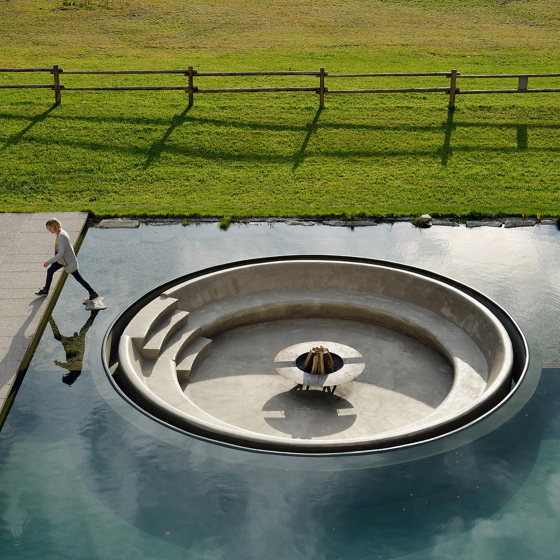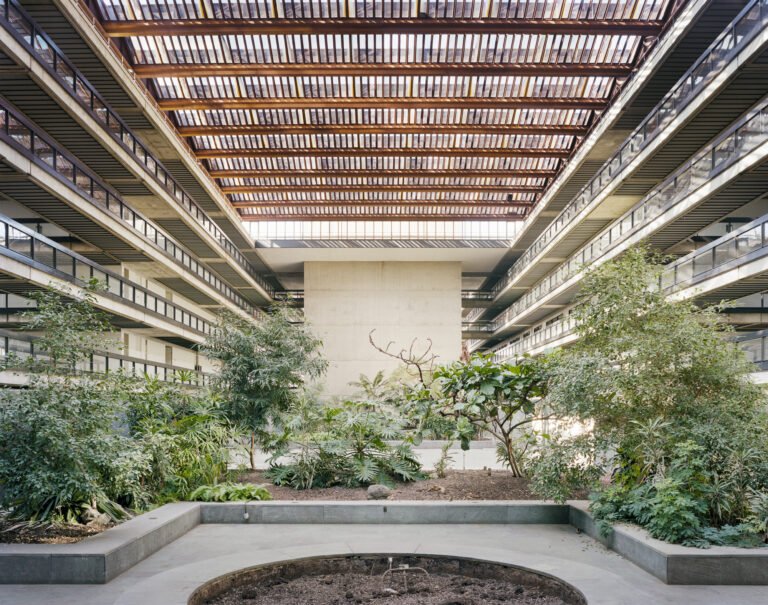Roman Izquierdo Bouldstridge Designs Elegant Vaulted Port Vell Oyster Bar
Port Vell Oyster Bar – The Project consists of the conversion of a 30sqm space into an oyster bar, located a few meters from the Port Vell in Barcelona. Since it was a space of reduced dimensions, an innovative game of mirrors creates the perception that the space is four times larger than reality. The presence of hanging plants, placed in an apparently random position, generates a poetic space in movement. A new atmosphere, full of living nature, arches and wood, provides a comfortable environment to taste oysters.
Architizer chatted with Roman Izquierdo Bouldstridge, Founder at Studio Roman Izquierdo Bouldstridge, to learn more about this project.
Architizer: What inspired the initial concept for your design?
Roman Izquierdo Bouldstridge: The initial concept of the design aims to highlight the beauty of two existing elements of the building. On the one hand, the formal elegance of the arches, generating a spatial rhythm and a path for customers who come to try oysters. On the other hand, the materiality of the wooden beams and the unique Catalan vaults. In this way, the design concept creates an atmosphere where the new and the old merge in a unique gastronomic scenery. Therefore, there was not an inspiration for the design. There was a designing attitude to rediscover the existing beauty and reinterpreting it through new interventions.

© Roman Izquierdo Bouldstridge

© Roman Izquierdo Bouldstridge

© Roman Izquierdo Bouldstridge
What do you believe is the most unique or ‘standout’ component of the project?
I believe that there is not a unique component in this project, but how all the components are related to each other can lead to a unique experience. An arch, in itself, is not something unique, but the succession of arches and the space in-between them, in a real or virtual way, can give rise to unique sensations.
The value of a wooden beam is something unique, as it formed the trunk of a tree. However, I think that the repetition of the beams emphasizes a directionality, materiality and a space in-between more elements. In this way, the project extrapolates the language of wooden beams to form a system of chestnut boards that responds to all the functions of the project. The new elements harmonize with the old through a simple and unitary concept.

© Roman Izquierdo Bouldstridge

© Roman Izquierdo Bouldstridge
What was the greatest design challenge you faced during the project, and how did you navigate it?
The greatest design challenge was to transform a small space with no architectural identity into a larger space with a monumental character. Through a simple design decision, the oyster bar experience changes. Three large mirrors, placed on the perimeter walls, increase the existing space four times.
The arched mirror hides the servant spaces of the bathroom and storage room, creating a new longitudinal rhythm. The challenge is to create an interior porch completely open to the outside, through two large iron windows that provide activity from the street thanks to their exterior bars. The entrance takes place from the threshold that forms a new arcade built on the façade, framing both the beginning and the end of the user’s sensory experience.

© Roman Izquierdo Bouldstridge

© Roman Izquierdo Bouldstridge
What is your favorite detail in the project and why?
The most important construction detail of the project responds to the intention of preventing the viewer from being aware that there are mirrors. The aim is to create the reflections without being seen the elements that causes it. To do this, we try to make these elements as flush as possible to the limits of the walls and the new built arches. The careful detail between the mirrors and the wooden shelves also emphasizes the aforementioned visual effect.
How important was sustainability as a design criteria as you worked on this project?
I understand design as a way to bring humans closer to nature. The created atmosphere express a search for beauty, providing new sensations to the users. In a world increasingly distant from our natural origin, projects are opportunities to create new sceneries where matter, light and nature merge.
I believe that our profession involves an environmental responsibility. For this reason, our careful choice of materials, responds both to aesthetics and to the sustainability needs of our world. In the same way, our goal is to maximize energy efficiency and reduce the use of environmental resources in our projects.

© Roman Izquierdo Bouldstridge
How do you believe this project represents you or your firm as a whole?
Our work blurs the boundaries between the artificial and the natural, giving rise to places full of calm and harmony. In this way, the incidence, reflection and interaction of light plays a fundamental and poetic role. We are coherent with the non-permanent and continually transforming nature of the spaces. Therefore, programmatic flexibility, material reuse and functional versatility are essential aspects in our work.
The innovation and conceptualization of our projects reflect a constant concern to find new forms of expression. Our creative process starts from an attitude of pursuing the beauty of the simple, trying to understand the nature of the existing space and its environment. In this way, we established the framework from which to create freely by observing in detail the needs of each place and client.
For more on Port Vell Oyster Bar, please visit the in-depth project page on Architizer.
Port Vell Oyster Bar Gallery


